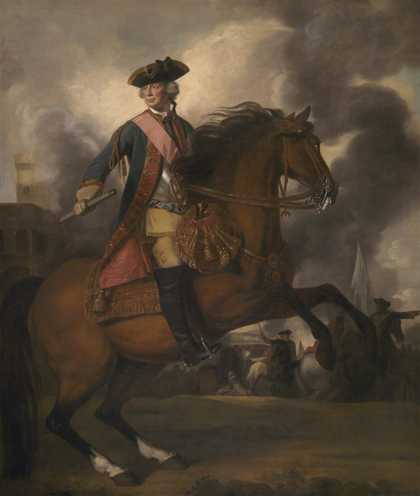
Sir Joshua Reynolds
Lord Ligonier (1760)
Tate
The first painting to be brought into the studio was a large equestrian portrait of Lord Ligonier 1760 by Sir Joshua Reynolds.
The portrait is life-sized and measures 283 x 238 cm. The purpose of the project was to restore the painting, as far as possible, to what it would have originally looked like.
Initially, research was carried out into the records of painting in the National Archives. These records detailed the previous conservation treatment which had happened on the painting in the nineteenth century.
In 1891, a varnish had been applied to painting which had become extremely discoloured; distorting the colours of the composition and also making the scene appear very flat and one-dimensional. The first stage of the work was to remove this layer, as well as removing large patches of resinous overpaint.
In spite of this work, the surface still appeared turbid, unsaturated and very uneven in gloss, indicating the presence of more discoloured and degraded non-original material. Analysis of this material revealed a further two layers of substance on top of the original material.
The next stage in the treatment process, following the removal of these layers of varnish, was restoration: the disguising of damage to the paint layer and the application of new varnish to produce the correct gloss and colour saturation of the surface.
This conservation and restoration work has returned a range of colour, sense of texture and three-dimensional illusion to the portrait.
